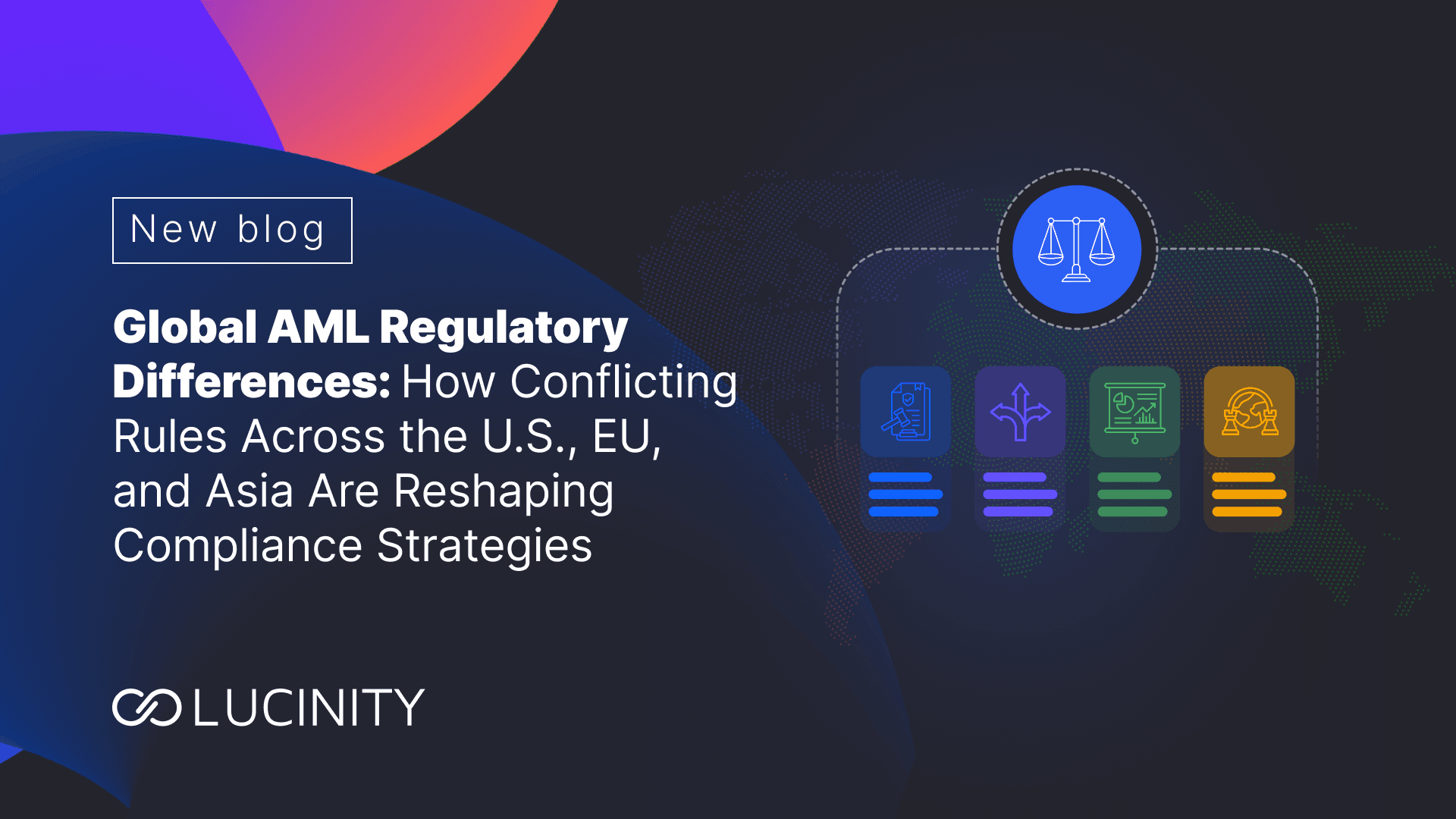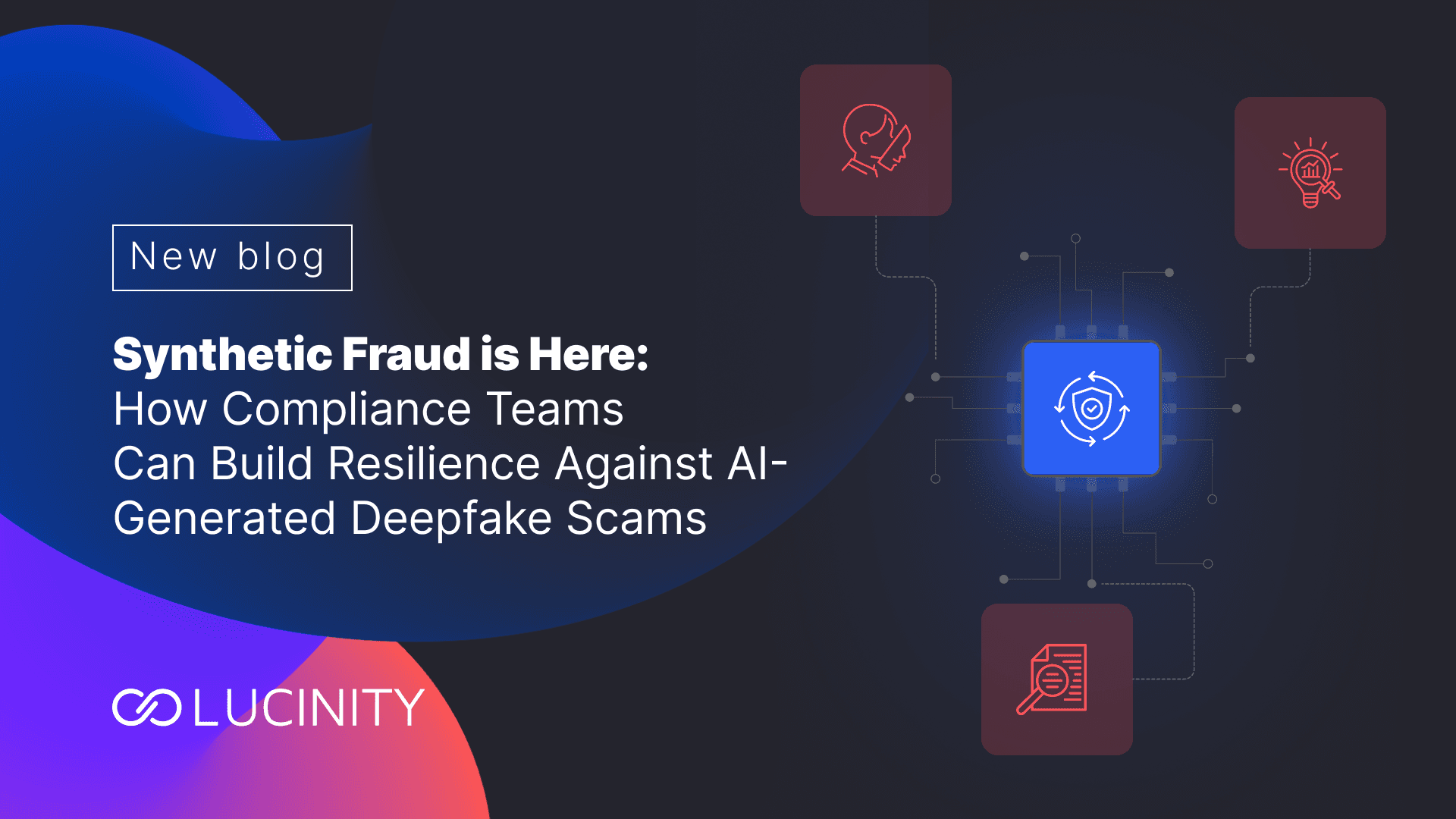Ensuring Explainability and Auditability in Generative AI Copilots for FinCrime Investigations
Explore strategies to maintain explainability and auditability when implementing Generative AI copilots in FinCrime investigations.
Integrating Generative AI copilots into financial crime (FinCrime) investigations offers significant advancements, with AI offering 60–99% improvement in fraud detection accuracy. However, ensuring these AI systems are explainable and auditable is essential for maintaining trust and meeting regulatory standards as their business adoption rises.
This blog explains how explainability, auditability, efficiency, and innovation can go hand-in-hand to ensure the best use of Generative AI copilots in Fincrime investigations.
The Importance of Explainability and Auditability in Generative AI Copilots for FinCrime Investigations
Generative AI copilots offer unparalleled efficiency in financial crime investigations by automating case summaries, transaction analysis, and regulatory reporting. However, their widespread adoption in compliance operations depends on two key factors: explainability and auditability.
Here’s why explainability and auditability matter in FinCrime investigations:
Regulatory Compliance
Financial institutions must comply with strict regulations such as the EU AI Act, General Data Protection Regulation (GDPR), and U.S. Anti-Money Laundering (AML) laws, all emphasizing the need for transparent AI decision-making.
The EU AI Act, for instance, introduces a comprehensive framework for regulating artificial intelligence. It focuses on a risk-based approach to ensure safety and compliance across various sectors. Regulators demand that AI-generated insights be traceable, understandable, and justifiable.
Trust and Adoption
Compliance officers and investigators need confidence in AI recommendations. Unclear AI decision-making can cause doubt and slow adoption among professionals handling FinCrime investigations.
AI systems must demonstrate consistent decision-making across different cases to prevent bias and ensure fair treatment of all customers. Providing clear explanations builds trust and supports the effective use of AI tools.
Risk Mitigation
AI systems with complicated models can produce incorrect or misleading insights. An explainable AI copilot provides clear reasoning and supporting evidence, minimizing false positives and regulatory risks.
Maintaining detailed audit trails allows financial institutions to assess and manage risks associated with AI implementations effectively. This proactive approach aids in identifying potential vulnerabilities and ensures that AI systems operate within acceptable risk parameters.
Ethical Considerations
Transparent AI systems promote ethical decision-making by allowing stakeholders to understand and evaluate the fairness of AI-driven outcomes. This is particularly important in FinCrime investigations, where biased or unjust decisions can have significant legal and reputational consequences.
Audit logs help organizations identify errors, optimize AI models, and refine compliance strategies without disrupting daily operations. A well-audited AI system boosts operational efficiency while maintaining regulatory alignment.
As AI adoption in compliance grows expected to reach 90% by 2025 in AML-related activities, institutions must prioritize transparency and accountability to prevent misuse and regulatory penalties.
Challenges in Ensuring Explainability and Auditability in AI Copilots
As discussed above, implementing explainability and auditability in AI copilots for financial crime investigations is essential. However, this presents several challenges:
AI's Black-Box Problem
Many AI models, particularly deep learning-based systems, function as "black boxes," making it difficult to explain their reasoning. This opacity poses challenges in compliance and regulatory approval.
Balancing Automation and Human Oversight
While automation accelerates financial crime investigations, human expertise is still required to verify AI-generated findings. Striking the right balance between automation and manual review is important for compliance.
Data Privacy and Security Concerns
AI copilots process sensitive financial data, raising concerns about data security and regulatory compliance (e.g., GDPR, CCPA). Ensuring AI outputs are auditable without compromising privacy is a key challenge.
Regulatory Uncertainty
AI regulations are evolving, and financial institutions must stay updated with the latest compliance frameworks. Institutions adopting AI copilots must align with current laws while being flexible for future changes.
Model Interpretability and Complications
Deep learning-based AI models often lack interpretability, making it difficult for compliance officers to understand and trust their decisions. This can slow the adoption of AI in compliance operations.
Integration with Existing Systems
Integrating AI copilots into existing compliance frameworks can be challenging due to compatibility issues, data silos, and the need for significant infrastructure upgrades. Ensuring seamless integration is essential for effective AI deployment.
Actionable Strategies to Achieve Explainability and Auditability
To overcome these challenges and ensure their Generative AI copilots are explainable and auditable, financial institutions can implement the following best practices:
Use Explainable AI (XAI) Models
Using Explainable AI (XAI) models ensures that AI copilots in financial crime investigations provide clear, interpretable reasoning for their decisions. AI systems should be designed with transparency in mind, offering insights that compliance teams can easily understand and verify. A combination of rule-based AI and machine learning enhances interpretability by integrating predefined logic with adaptive learning capabilities.
Maintain Detailed Audit Logs
Maintaining detailed audit logs is essential for regulatory compliance and operational transparency. Every AI-driven action, from case assessments to risk evaluations, must be recorded to ensure traceability. Additionally, institutions should implement mechanisms for easy export of AI activity records, allowing both internal and external audits to review AI-generated insights effectively.
Incorporate Human-in-the-Loop (HITL) Systems
Incorporating Human-in-the-Loop (HITL) systems safeguards against automation bias and ensures that AI copilots serve as decision-support tools rather than autonomous decision-makers.
Compliance teams must thoroughly review AI-generated outputs before finalizing any actions. Furthermore, AI copilots should provide editable recommendations, allowing investigators to adjust insights as needed, and ensuring that human guidance remains a fundamental component of the compliance workflow.
Implement AI Governance and Compliance Frameworks
Implementing AI governance and compliance frameworks ensures that AI applications align with global regulatory standards and ethical considerations. Institutions should establish internal policies that define responsible AI usage, data security protocols, and decision-making guidelines. Regular AI audits should be conducted to assess model performance, detect biases, and verify compliance with transforming legal requirements.
Leverage No-Code AI Configuration
Leveraging no-code AI configuration empowers compliance professionals by providing user-friendly interfaces for AI customization. No-code tools enable teams to configure AI actions, define investigation workflows, and adjust decision-making parameters without requiring programming knowledge. This flexibility ensures that compliance teams maintain full control over AI copilots, adapting them to specific regulatory and operational needs.
Engage in Continuous Training and Education
Engaging in continuous training and education is important for maximizing the effectiveness of AI copilots in financial crime investigations. Compliance teams must receive ongoing education on AI capabilities and limitations to ensure informed decision-making.
Additionally, staying updated with regulatory changes is essential, as financial crime laws and AI governance frameworks continue to change. A proactive approach to training and compliance adaptation helps institutions maintain regulatory alignment while leveraging AI’s full potential.
Implement Continuous Validation and Auditing
Regularly validate AI models and monitor their performance to ensure accuracy and reliability. Address biases and ethical concerns to promote fairness and responsible use of AI in financial crime detection.
Moreover, you can adopt continuous auditing practices to assess financial data more frequently, allowing for quicker detection of errors, control failures, and fraudulent activities.
How Lucinity Ensures Explainability and Auditability in FinCrime Investigations
Lucinity is designed with built-in explainability and auditability that allow financial institutions to integrate AI confidently into compliance operations while meeting stringent regulatory standards.
AI-Generated Insights with Full Transparency: Luci summarizes financial crime cases, highlighting key risk indicators and transaction patterns in an intuitive, easy-to-understand format. Every AI-generated recommendation is backed by evidence and references, reducing uncertainty and improving investigator confidence.
Built-In Audit Log for Regulatory Compliance: Luci maintains an audit log access panel that enables compliance teams to export AI activity records for internal reviews and external audits in CSV format. Luci is designed to align with global AML and compliance frameworks, ensuring institutions meet GDPR, EU AI Act, and U.S. FinCrime regulations.
No Black-Box AI: Luci does not rely on opaque AI models; instead, it employs interpretable AI techniques, ensuring that compliance officers can follow its reasoning. It provides editable insights, allowing investigators to refine AI-generated reports before submission.
Configurable AI Governance with Luci Studio: Luci Studio offers a drag-and-drop interface for compliance teams to configure AI actions and workflows without needing technical expertise. Luci’s platform-agnostic design allows financial institutions to integrate AI seamlessly into their existing compliance workflows.
Enhancing AI Auditability with Maker-Checker Validation: Luci implements a maker-checker principle, where outputs are cross-verified by a secondary LLM before being presented. This ensures consistency, accuracy, and alignment with compliance standards.
Ensuring Accuracy with High-Fidelity Data Integration: Luci’s outputs undergo continuous benchmarking against golden datasets, maintaining an accuracy rate of 94-98%. Regular audits ensure that AI models remain explainable, accurate, and compliant.
Generative Intelligence Process Automation (GIPA) for Compliance Control: GIPA allows organizations to define exactly how Luci processes data, ensuring insights align with compliance requirements and internal policies.
Proven Customer Results and Adoption: Luci has a 99% adoption rate, significantly accelerates case resolution, and seamlessly integrates into existing compliance workflows. Analysts trust its AI-generated reports, requiring minimal adjustments, while automation boosts productivity by freeing teams to focus on high-risk cases.
Continuous Optimization and Accuracy: Luci is actively used in financial institutions, with continuous enhancements based on real-world feedback. AI outputs are human-verified for compliance transparency and benchmarked against golden datasets with 94-98% accuracy to maintain precision in investigations.
Preventing AI Hallucinations for Explainability: Luci employs Retrieval-Augmented Generation (RAG) to ensure that every AI-generated response is grounded in case-specific data, minimizing the risk of inaccuracies or hallucinations. By retrieving relevant information directly from validated sources before generating any output, Luci ensures that investigators receive only factual, evidence-based insights. Here’s how Luci’s RAG framework enhances reliability-
- Case-Centric InsightsLuci’s AI-generated reports, case summaries, and recommendations are not based on generic AI models but are firmly anchored in the underlying data of each case. This means every insight is traceable, auditable, and contextually relevant to financial crime investigations.
- Controlled Prompt Engineering for AccuracyUnlike open-ended AI models that may introduce ambiguity, Luci operates within predefined, rigorously tested prompts developed by Lucinity. This eliminates the risk of user-generated inputs leading to misleading outputs and ensures consistent, case-relevant results.
- Evidence-Driven Output with Source ReferencesEvery recommendation, report, or summary provided by Luci includes clear source references, enabling compliance teams to verify AI-generated findings. This transparency is key in regulated environments where explainability and auditability are essential.
- Minimized Risk of HallucinationsLuci’s RAG methodology ensures AI outputs are rooted in up-to-date, validated data, rather than assumptions or incomplete information. To maintain this reliability, extensive unit tests verify that RAG processes consistently retrieve and apply the correct data before generating insights.
Final Thoughts
These features enable Lucinity to provide financial institutions with AI-powered compliance tools they can trust while maintaining regulatory transparency, explainability, and auditability. The following key takeaway from this blog will help you get a better and brief understanding of the topic.
- Explainability is essential for compliance, ensuring that AI-generated insights are interpretable and justifiable for investigators and regulators.
- Auditability provides transparency, allowing financial institutions to track AI-driven actions, validate findings, and maintain accountability in compliance workflows.
- Challenges such as AI black-box issues, evolving financial crime tactics, and regulatory uncertainty must be addressed through governance frameworks, HITL systems, and no-code AI customization.
Lucinity’s Luci Copilot ensures AI explainability and auditability by offering structured case insights, full audit logs, human oversight, and configurable AI governance tools. Learn more at Lucinity.
FAQs
Why is explainability important in AI-driven financial crime investigations?
Explainability ensures that AI-generated insights are interpretable, reducing the risk of errors, biases, and compliance issues.
How does Lucinity’s Luci Copilot ensure auditability?
Luci maintains detailed audit logs, tracks AI-generated insights, and enables CSV exports for external audits, ensuring transparency.
Can AI copilots replace human investigators?
No, AI copilots support investigators by summarizing data and providing insights, but human compliance teams make the final decisions.
How does Luci prevent AI hallucinations in compliance reviews?
Luci employs explainable AI techniques, references evidence for recommendations, and integrates human oversight to ensure factual accuracy.





